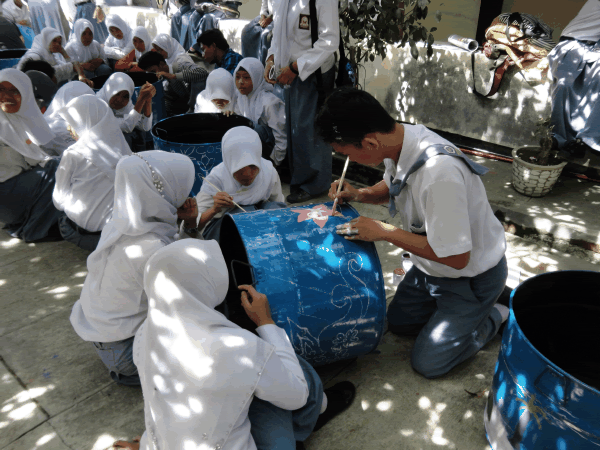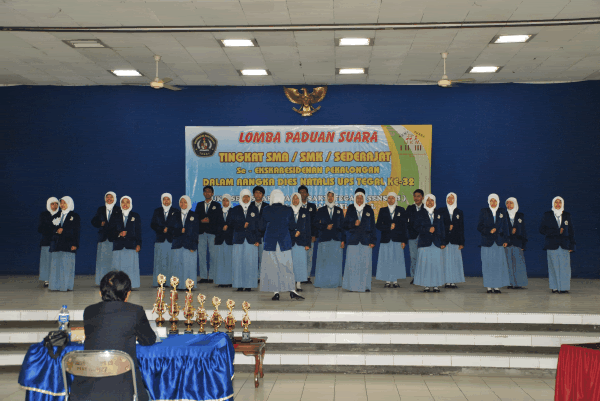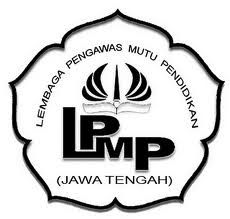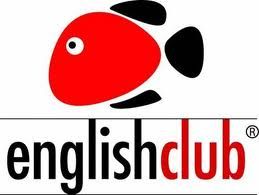STANDAR KOMPETENSI MENDENGARKAN
1. Memahami makna dalam percakapan transaksional dan interpersonal dalam konteks kehidupan sehari-hari
STANDAR KOMPETENSI MENDENGARKAN
2. Memahami makna teks fungsional pendek dan teks monolog sederhana berbentuk recount, narrative dan procedure dalam konteks kehidupan sehari-hari
STANDAR KOMPETENSI BERBICARA
3. Mengungkapkan makna dalam percakapan transaksional dan interpersonal dalam konteks kehidupan sehari-hari
STANDAR KOMPETENSI BERBICARA
4. Mengungkapkan makna dalam teks fungsional pendek dan monolog berbentuk recount, narrative dan procedure sederhana dalam konteks kehidupan sehari-hari
STANDAR KOMPETENSI MEMBACA
5. Memahami makna teks tulis fungsional pendek dan esei sederhana berbentuk recount, narrative dan procedure dalam konteks kehidupan sehari-hari dan untuk mengakses ilmu pengetahuan
STANDAR KOMPETENSI MENULIS
6. Mengungkapkan makna dalam teks tulis fungsional pendek dan esei sederhana berbentuk recount, narrative, dan procedure dalam konteks kehidupan sehari-hari
KOMPETENSI DASAR MENDENGARKAN
1.1 Merespon makna yang terdapat dalam percakapan transaksional dan interpersonal yang menggunakan ragam bahasa lisan secara akurat, lancar dan berterima dalam konteks kehidupan sehari-hari dan melibatkan tindak tutur: berkenalan, bertemu/berpisah, menyetujui ajakan/tawaran/ undangan, menerima janji, dan membatalkan janji
KOMPETENSI DASAR MENDENGARKAN
2.1 Merespon makna secara akurat, lancar dan berterima dalam teks lisan fungsional pendek sederhana (misalnya pengumuman, iklan, undangan dll.) resmi dan tak resmi dalam berbagai konteks kehidupan sehari-hari
KOMPETENSI DASAR BERBICARA
3.1. Mengungkapkan makna dalam percakapan transaksional dan interpersonal secara akurat, lancar dan berterima dengan menggunakan ragam bahasa lisan dan melibatkan tindak tutur: berkenalan, bertemu/berpisah, menyetujui ajakan/tawaran/ undangan, menerima janji, dan membatalkan janji
KOMPETENSI DASAR BERBICARA
4.1 Mengungkapkan makna dalam bentuk teks fungsional pendek (misalnya pengumuman, iklan, undangan dll.) resmi dan tak resmi dengan menggunakan ragam bahasa lisan dalam berbagai konteks kehidupan sehari-hari.
Tuesday 29 November 2011
UNIT REVIEW SEMESTER 1 FOR GRADE XI
1. Dimas : Would you accompany me to the internet?
Bonar :
Dimas : Thanks. I really appreciate it.
a. I’m disappointed
b. I’m not so sure
c. Sure
d. Not at all
e. I don’t know
2. Boni : How was your trip to Nias?
Yudha : ... with it. I want to go there again next year.
a. I’m very pleased
b. I’m really disappointed
c. I’m very displeased
d. I’m very unsatisfied
e. I’m not happy 2
1. Endang : How was your visit to the museum?
Ayu : It was closed when I got there. ... about it.
Endang : I’m sorry to hear that.
a. I’m satisfied
b. I’m happy
c. I’m really content
d. I’m very disappointed
e. I’m delighted
2. Arum : What do you think is the effective way to reduce global warming?
Della : ... planting trees is one of the effective ways to reduce global warming.
a. I don’t know
b. How do you see
c. I’m not sure
d. In my opinion
e. Are you certain that
3. Aspani : ... We help reduce global warming?
Rini : I think we can help reduce global warming through saving energy and recycling.
a. What do
b. Why should
c. How can
d. When can
e. Where should
4. Aldo : ... I would stay away from drugs.
Tius : Yes, I know. I’ll stay away from it.
a. I don’t want to say that
b. I wouldn’t say
c. If I were you
d. I don’t think
e. Don’t think
5. Nanis : ... get persuaded by drug peddlers.
Matias : OK. Don’t worry I won’t.
a. Make sure you
b. Make sure you don’t
c. I think you should
d. Be sure you
e. You’d better
6. Elang : Look, the library is still open.
Endra : ... I thought we can’t make it.
a. This is horrible!
b. I’m very unsatisfied!
c. Oh, this is bad!
d. Thank goodness!
e. This is so disappointing!
7. Agung :
Candra : I’m sorry. I didn’t mean to hit you.
a. Thank goodness!
b. What a relief!
c. Whew!
d. Terrific!
e. Ouch!
8. Bella : What do you think of the book?
Ajeng : ... I really love it.
a. It’s terrific!
b. It’s disappointing!
c. It’s very unsatisfying!
d. It’s horrible!
e. It’s displeasing!
II. Read the text and choose the correct answer for every question below.
Questions 11-17 are based on the manual below.
New York (city), the largest city in the United States, the home of the United Nations,
and the center of global finance, communications, and business. New York City is unusual
among cities because of its high residential density, its extraordinarily diverse population,
its hundreds of tall office and apartment buildings, its thriving central business district, its
extensive public transportation system, and its more than 400 distinct neighborhoods. The
city’s concert houses, museums, galleries, and theaters constitute an ensemble of cultural
richness rivaled by few cities. In 2000 the population of the city of New York was 8,008,278;
the population of the metropolitan region was 21,199,865. New York City consists of five
boroughs they are Queens, Brooklyn, Staten Island, The Bronx, and Manhattan.
There are so many attractive places in the city. One of its most popular landmarks is
the statue of liberty. It is a symbol of freedom for many, was one of the first sights to welcome
immigrants arriving in the United States. The statue stands 93 m (305 ft) tall on Liberty
Island in New York Harbor. It was designed by French sculptor Frédéric-Auguste Bartholdi
and is a gift from France commemmorating the first centennial of U.S. independence from
Britain.
New York’s 250 museums cater to every specialty and every taste. It has museums
in such fields as natural history, broadcasting, fire-fighting, crafts, and ethnic cultures. As
the world’s greatest art center, New York City has more than 400 galleries and is a mecca for artists, art dealers, and collectors. Madison Avenue between 57th and 86th Streets is the most important locale for galleries, but dozens of others are located in SoHo (south of Houston Street) and adjoining neighborhoods.
New York also has a famous botanical garden. It is called Brooklyn Botanic Garden, 21-
hectare (52-acre) botanic garden, located in the borough of Brooklyn, in New York City. The
garden includes such attractions as the Children’s Garden, the first of its kind in the world.
Taken from: Microsoft ® Encarta ® 2007. © 1993-2006 Microsoft Corporation. All rights reserved.
9. What is the text about?
a. Washington D.C.
b. The statue of Liberty
c. New York boroughs
d. The culture of New York
e. New York City
10. The following is true about New York, except ...
a. It have a botanical garden
b. It is the home of the statue of Liberty
c. It has 250 museums
d. It consists of four boroughs
e. It has more than 500 galleries
11. Where is the statue of liberty located?
a. Liberty Island
b. Brooklyn
c. SoHo
d. Manhattan
e. Queens
12. What does the word commemorating in the second paragraph means?
a. Acknowledgement
b. Ignore
c. Memorize
d. celebration
e. Memorializing
13. What does the word “it” in the last paragraph refers to?
a. New York
b. Brooklyn
c. Children’s garden
d. Museum
e. Botanical garden
14. How many galleries are there in New York?
a. 400
b. More than 400
c. Less than 400
d. Not more than 500
e. More less than 350
15. SoHo is the acronym of ...
a. South of Honolulu
b. South of Hillside
c. South of Hoboken
d. South of Houston
e. South of Hackensack
Questions 18-23 are based on the following text.
Should Americans be Forced to Use Public Transportation?
by Jack Davis
First, let me define what the question is and isn’t asking. It isn’t asking if we should we all abandon cars right now, nor is it asking if we should abandon them completely, nor is it asking if every American should do so. It is asking whether some Americans should have to take public transit some of the time, and I would say yes.
Oil use and pollution aside, in some cities like Los Angeles and New York there just isn’t room for any more roads, so in order for large cities to grow, they need more people to take public transit or risk permanent traffic jam. One bus can safely hold 40 people, so even at half capacity that’s nearly 20 cars’ worth of space in traffic cleared up, and nearly 20 parking spaces that don’t need to be built.
There are a lot of people that can take public transit with little inconvenience but simply don’t because they never have in the past. If residents in areas with plenty of transit had to buy transit passes as part of their property taxes then they would have little excuse not to bus occasionally. A number of universities already bundle a ‘U-Pass’ with their tuition fees, forcing their students to take the bus. When given the chance the majority of those students have voted to keep these programs.
A similar system in apartments where a portion of the tenants are not issued parking
spaces in exchange for a discount on their rent would also be forcing people to use public
transit. This is already being done with the assignment of one community car to several
apartment tenants that arrange a schedule for the car, and this program gets many positive
reviews.
So yes, I would say that Americans should be forced to use public transit, as Americans whom are already forced to do so find that it works well for them.
Taken from: www.helium.com
16. What does the writer suggest?
a. Americans should learn to use public transportations.
b. American should give up their cars.
c. Americans should be forced to use public transportations.
d. The government should limit the number cars.
e. The government should charge extra taxes for those who uses cars.
17. The following is one of the writer’s suggestions in forcing people to use public transportations
a. Make people buy transit passes as part of their property taxes.
b. Banning the use of cars.
c. Stop automobiles productions.
d. Fine people who do not use public transportations.
e. Limit the number of gasoline.
18. What is the purpose of the article?
a. Defining the functions of public transportations.
b. Arguing that American should not use public transportations.
c. Suggesting American the ways to use public transportation.
d. Asking for more public transportations.
e. Suggesting that American should be forced to use public transportations.
19. What is the function of the first paragraph?
a. Repeating the thesis or proposal
b. Stating the proposal
c. Stating the reasons behind the thesis
d. Describing the problem
e. Giving arguments
20. In the article you find the word transit a few times. What does it means?
a. Stop
b. Transportation
c. Exit
d. Entrance
e. Bus stop
21. What is the function of the last paragraph?
a. Describing the problem
b. Stating the reasons behind the thesis
c. Giving arguments
d. Stating the proposal
e. Repeating the thesis or proposal
Questions 24-30 are based on the following text.
The Jackal who Saved the Lion
Once upon a time, there lived a lion in a forest. One day, when he went to drink water in
a river, one of his feet got stuck into the damp mushy mud of the river. He tried a lot to get out
of the mud, but didn’t achieve. He had to lie without food for days because he didn’t find any
help. On one fortunate day, a kind jackal came to drink water from the river. When he saw
the lion, he went closer to the lion and said, “What is the matter? Why are you resting here?”
The lion narrated him the pathetic story. The Jackal instantly made a way out from the sand but the lion was unable to move his feet. As he was set in the same posture for last several days, his body became stiff. The jackal understood the condition of the lion and helped him to get out of the mud with an extra effort. The Lion was really thankful to jackal for his kind help. He was very happy to get free after so many days.
The Lion appreciated the effort made by the jackal. He offered the jackal to live close to him and also promised to give food to him whenever he caught food. The jackal accepted the offer and started living with the lion. Thus, they lived happily sharing the food. With the passing time, they expanded their families. The lion had cubs and the jackal had kid jackals. Both, the lion and the jackal were passing their days happily. They didn’t have any idea that their friendship was not liked by their families.
One day after a long time, the lioness, lady of the lion’s house, told her cubs that she didn’t like the amity between the jackal and her husband. The cubs passed the message to the kid jackals. The kids complained the matter to the lady jackal. The lady jackal passed the complaint to her husband.
The jackal went to the Lion and asked,” I helped you without any thought in return. You had asked me to live with you, so I started living with you. Now, if you don’t want me to live with you, you should have told me yourself. What did you involve your wife and cubs to convey this? “. The Lion was shocked to hear such words. He said, “My dear friend, what are you saying? I don’t find any problem with you or your friendship”. He assured the jackal that he had no such ill-feelings for the friendship between them.
The Lion also assured that he would talk to the lioness and solve the whole matter. The
jackal was intelligent and understood the situation. He said to the lion, “Dear friend, I know
you are sincere, but our families could not exactly respond the same level of friendship. So, let us stay apart and meet often as friends. We could also hunt together. It would be better, if our families stay apart”. The Lion agreed to the proposal with a heavy heart.
The two families parted from each other as friends. The Jackal and the Lion continued to share the friendship. They often met each other and hunt together. Thus, the two friends shared a healthy friendship throughout their life.
Taken from: www.culturalindia.net
22. What is the story about?
a. The friendship between the Lion and the Jackal family.
b. The rivalry between the Lion and the Jackal.
c. The evilness of the Lioness.
d. The friendship between a lion and the jackal.
e. The thoughtfulness of the Lion.
23. Who are the main characters of the story?
a. The lion’s family and the Jackal’s family
b. The Lion and The Jackal
c. The Lioness and the Lady Jackal
d. The lion cubs and the Jackal kids
e. The Lion and the Jackal’s family
24. What does the lion do in return of the Jackal’s help?
a. He told the Jackal to always hunt with him.
b. He told the Jackal to live with him in his house.
c. He told the Jackal to live near the Lion and give him food.
d. He gave him a home.
e. He gave him a present.
25. What did the lioness feels of the lion’s and the jackal’s friendship?
a. She was not pleased.
b. She was pleased.
c. She was delighted.
d. She was happy about it.
e. She was content about it.
26. From whom did the jackal heard that the lion’s family doesn’t like the friendship between
them?
a. The Lion
b. The lion cubs
c. The kid Jackals
d. The lady Jackal
e. The Lioness
27. The synonym of the word amity in the fourth paragraph is...
a. rival
b. rivalry
c. enemy
d. opposition
e. friendship
28. How did the story end?
a. The Lion and the Jackal lived apart but still be friends.
b. The Jackal’s and the Lion’s friendship ends.
c. The Lion and the Jackal still live together and hunt together.
d. The Lion and the Jackal lived apart and doesn’t hunt together.
e. The Jackal is very angry and cannot accept the Lion as his friend anymore.
























